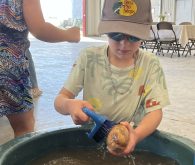A horse slaughter plant in Fort Macleod, Alta., is building a new kill box in an effort to stun horses more humanely, said a spokesperson for the Canadian Food Inspection Agency.
The new kill box will be an improvement over the old one, said Martin Appelt, manager of meat programs at the CFIA, because it is specially designed for horses.
“The old one was closed in, but it was a retrofit,” Appelt said.
It’s preferable to have a kill box that is as closed in as possible, because a horse is more likely to panic if it can see into the plant.
Read Also

Anti-separatist movement targets rural Alberta
Former deputy premier Thomas Lukaszuk’s anti-separatism Alberta Forever Canada petition campaign expects to run full steam ahead into the province’s farming regions
“The setup of the plant (Fort Macleod) was originally optimized for beef,” Appelt said. “That’s not to say that it is unsuitable for horses… but it’s not the most ideal vehicle to do it with.”
In February, the Canadian Horse Defence Coalition, a group with the mission of banning equine slaughter, released videotapes shot at the Bouvry Exports plant in Fort Macleod. The tapes depicted horses struggling and kicking after employees failed to kill animals with the first shot.
Since the tapes were made public, the CFIA has worked with management at Bouvry to improve practices at the plant.
Temple Grandin and others have suggested that video cameras should record the activity at slaughter plants. Then third party auditors would review the videotapes.
The problem with that idea is the issue of privacy, Appelt said.
“The notion that the federal government is going to be videotaping you at work, day in and day out, that is an immediate conflict with our privacy laws.”
If Bouvry wants to install a video camera and send out tapes for review, that is their choice, he added.
In 2009, nearly 94,000 horses were slaughtered at plants in Fort Macleod and Massueville, Que. That’s down from 113,000 horses in 2008.















